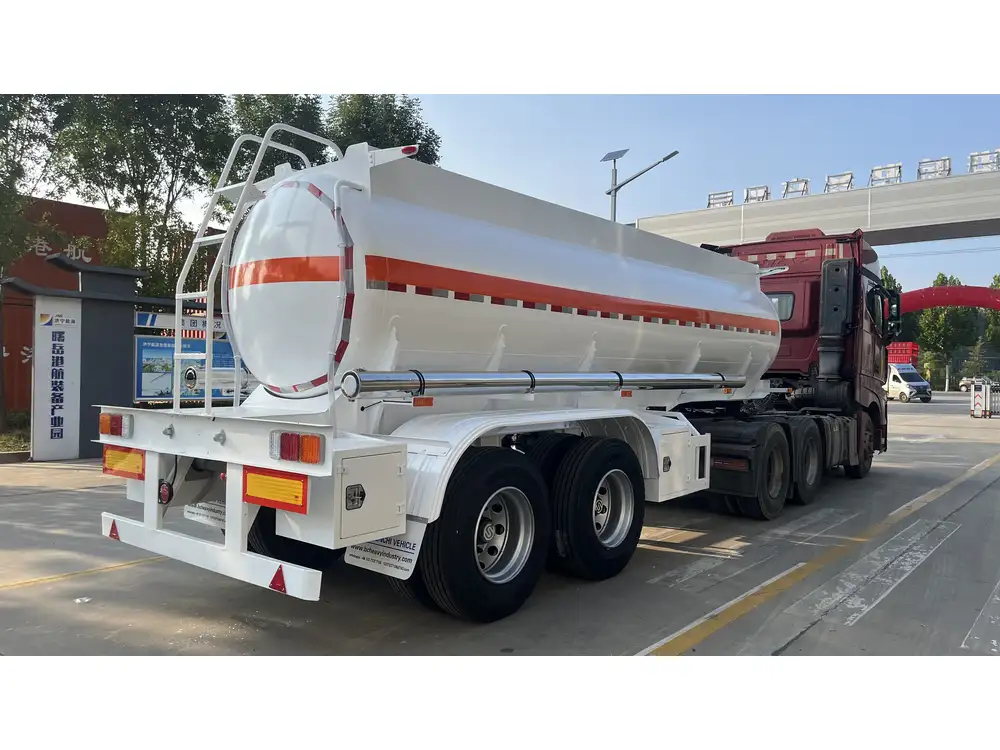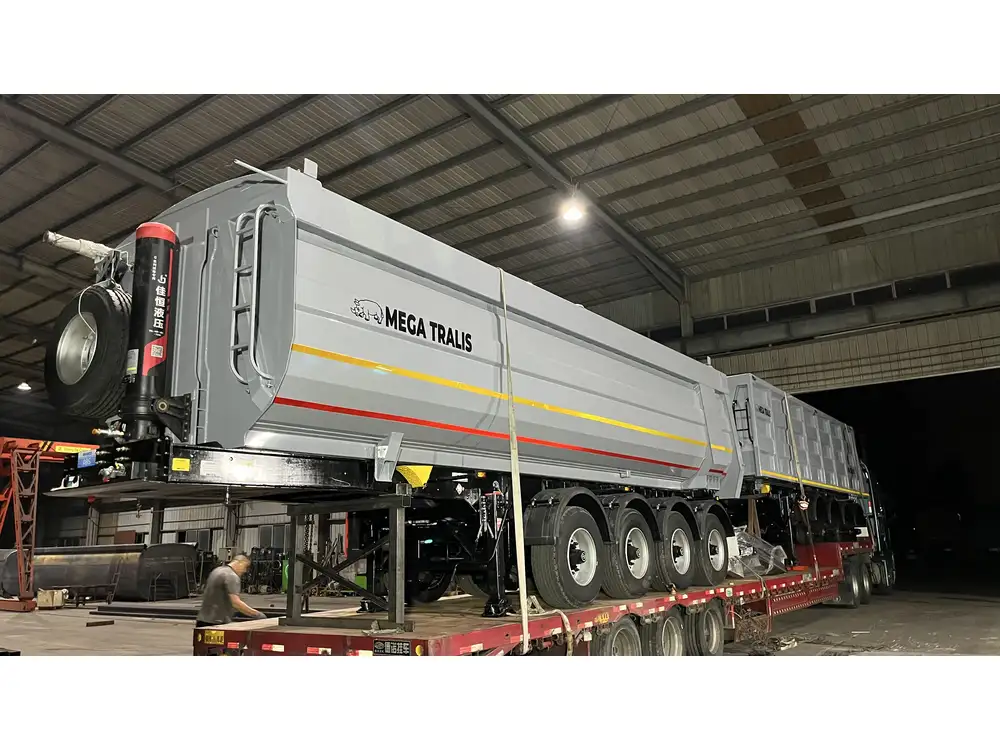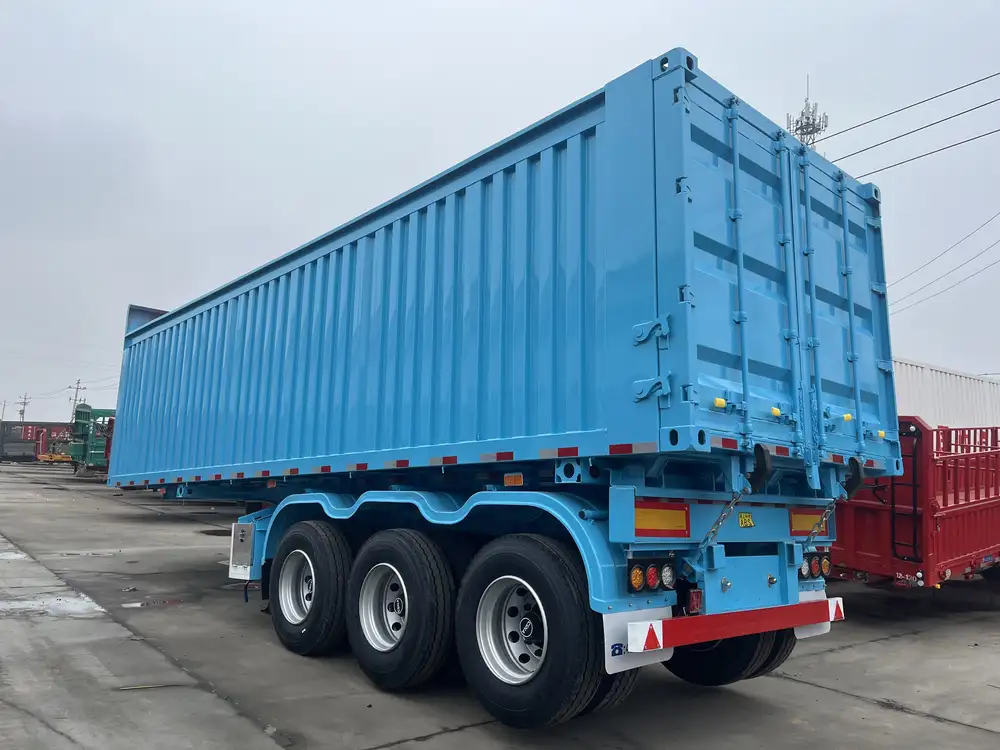Introduction to Semi-Trailers
Semi-trailers form a crucial backbone of the transportation industry, enabling the efficient movement of goods across vast distances. Understanding the dimensions, particularly the width of semi-trailers, is essential for businesses, logistics providers, and individuals involved in the transport sector. This article aims to elucidate the standard widths of semi-trailers, their implications, and how these dimensions can affect operation, legality, and safety across various regions.
Semi-Trailer Width: Standard Measurements and Variations

The Standard Width of a Semi-Trailer
In North America, the standard width for most semi-trailers is 8.5 feet, which translates to 102 inches. This dimension has become the industry norm due to regulatory consistency and the need for uniformity in hauling operations.
| Measurement Unit | Standard Width |
|---|---|
| Feet | 8.5 ft |
| Inches | 102 in |
Legal Width Regulations
While 8.5 feet is common, regulations may vary significantly by location, especially when considering travel across state lines or international borders. Below are some notable considerations:
- United States: The Federal Highway Administration (FHWA) states that the maximum width for interstate travel should not exceed 8.5 feet, but states may allow for larger widths for specialized vehicles.
- Canada: Similar to the U.S., the width is generally limited to 8.5 feet, but certain provinces might have exemptions for specialized equipment, usually documented through permits.
Wider Semi-Trailers for Specialized Transport
For trucking companies involved in transporting oversized items, special permits can allow for wider trailers:
- Wider Trailers: Some vehicles can exceed the standard width of 8.5 feet, reaching widths of 10 to 12 feet (or more in select scenarios) for specific cargo types such as construction equipment or industrial machines.
- Permitting and Planning: Transporting oversized loads often requires meticulous planning, including obtaining the necessary permits and providing pilot vehicles to ensure compliance with local traffic laws.

Implications of Semi-Trailer Width on Operation and Safety
Impact on Maneuverability
The width of a semi-trailer directly influences its maneuverability:
- Turning Radius: Wider trailers can have an increased turning radius, which may hinder navigation in tight spaces.
- Road Occupancy: Wider vehicles may need to occupy more lane space, complicating interactions with passing vehicles, especially in narrow roads or congested urban environments.
Load Security and Distribution
The width also plays a significant role in load security and distribution:
- Stability: A broader trailer can help distribute weight more evenly, minimizing the risk of tipping. However, improperly loaded wide trailers can lead to severe safety hazards.
- Load Regulations: Ensuring compliance with regulations surrounding weight and distribution can prevent expensive fines and mitigate risks during transport.

Weather Considerations
Wider semi-trailers experience different dynamics when subjected to adverse weather conditions:
- Wind Resistance: Increased width can raise wind resistance, resulting in less stability on the road. Drivers must be vigilant during windy conditions to maintain control.
- Road Conditions: Semi-trailer width affects how wheels interact with the road surface, especially in adverse weather. Wider trailers may be more prone to hydroplaning during heavy rain.
Analyzing Semi-Trailer Width in Various Applications
Common Types of Semi-Trailers by Width
| Trailer Type | Standard Width | Application |
|---|---|---|
| Flatbeds | 8.5 ft | Transportation of raw materials and machinery |
| Dry Vans | 8.5 ft | General cargo and boxed goods |
| Refrigerated Trailers | 8.5 ft | Perishable goods transport |
| Lowboy Trailers | 8.5 ft to 10 ft | Heavy equipment transport |

Specialty Trailers and Their Widths
Certain specialty trailers fall outside standard width guidelines but are vital for specific functions:
- Extendable Flatbeds: These can extend beyond 8.5 feet when carrying oversized items and may be utilized for large-scale construction transports.
- Double-Deck Trailers: These often exceed standard widths to accommodate additional cargo levels.
Regulatory Compliance and Legal Issues
Local and National Transport Laws
Transporting loads requires adherence to a myriad of regulations that vary by region:
- Permit Requirements: Companies must secure appropriate permits for oversized vehicles. Failing to comply can result in substantial fines and delays.
- Compliance Checks: Regular inspections can involve measuring width and height, ensuring all trailers meet state and federal standards.

Impacts of Non-Compliance
Understanding width regulations can prevent costly operational setbacks. Non-compliance can incur:
- Fines: Local and federal authorities impose fines for violations, impacting a company’s bottom line.
- Legal Actions: Non-compliance can lead to liability in accidents caused by equipment not adhering to width regulations.
A Practical Guide for Transport Companies
When Choosing a Semi-Trailer Width
Transport companies should consider several factors when selecting semi-trailer dimensions:
- Load Type: Determining the size and type of cargo will dictate the necessary trailer specifications.
- Routes and Accessibility: Evaluating the roads and regions in which the trailer will operate can inform width decisions; some streets may be less accommodating to wider vehicles.
- Operational Flexibility: Assessing the common transport patterns can guide the choice between standard and specialty trailers.

Advantages of Knowing Semi-Trailer Width
Being aware of standard semi-trailer widths provides:
- Efficient Logistics Planning: Detailed understanding of vehicle dimensions streamlines routing, reducing potential obstacles.
- Informed Equipment Purchases: Knowing precise needs allows for better investment decisions when acquiring trailers.
Modern Trends and Innovations in Trailer Design
Technological Advances Affecting Width
Recent innovations in trailer design also influence width parameters and operational efficiency:
- Aerodynamic Designs: Newer models increasingly incorporate aerodynamic features that allow for marginally wider trailers while maintaining fuel efficiency.
- Smart Trailers: Integration of technology allows real-time monitoring of trailer dimensions and load distribution, enhancing safety and compliance.

Conclusion: Navigating the Width of Semi-Trailers
Understanding the width of semi-trailers is vital in the logistics industry. As operations expand across different jurisdictions, staying informed about standard and optimal trailer widths will facilitate compliance, improve safety, and ultimately support operational efficacy.
By embracing the insights shared within this article, businesses can better navigate the complexities associated with semi-trailer dimensions, ensuring that they not only adhere to legal regulations but also optimize transport efficiency. The investment in knowledge regarding semi-trailer widths can lead to improved logistics operations, enhanced competitiveness, and long-term sustainability in the ever-evolving transport landscape.



